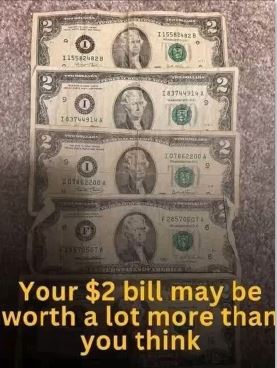
The humble $2 bill has always carried a sense of mystery — a banknote many people rarely encounter but instinctively set aside “just in case.” First introduced in 1862 during the Civil War to help ease a shortage of
coins, the bill originally featured Alexander Hamilton before going through several redesigns over the years. Its uncommon appearance in circulation makes it feel rare, and in certain situations, that perception reflects real collector interest.
Throughout its early history, the $2 bill saw unusual shifts in popularity. In the early 20th century, it was sometimes used less frequently because people felt unsure about its purpose. By the 1920s and ’30s, however, collectors began paying closer attention, and interest increased. That enthusiasm faded again in the 1950s, and the bill returned to being exchanged at face value — often tucked away in drawers, wallets, or holiday cards as a novelty.
Today, the story has evolved once more. The value of a $2 bill can vary depending on its age, design features, and condition. Modern bills generally remain worth their face value, but older versions — especially those with distinctive seals, limited print runs, or unusual serial numbers — can attract collector interest. Some notes are especially appreciated because they represent specific historical periods or include unique printing characteristics.
Because of this, many people take a second look before discarding old wallets or clearing out storage boxes. That crisp — or gently used — $2 bill may be more than a quirky keepsake. With its long history and potential appeal to collectors, it represents a small piece of American currency that holds both charm and cultural significance.